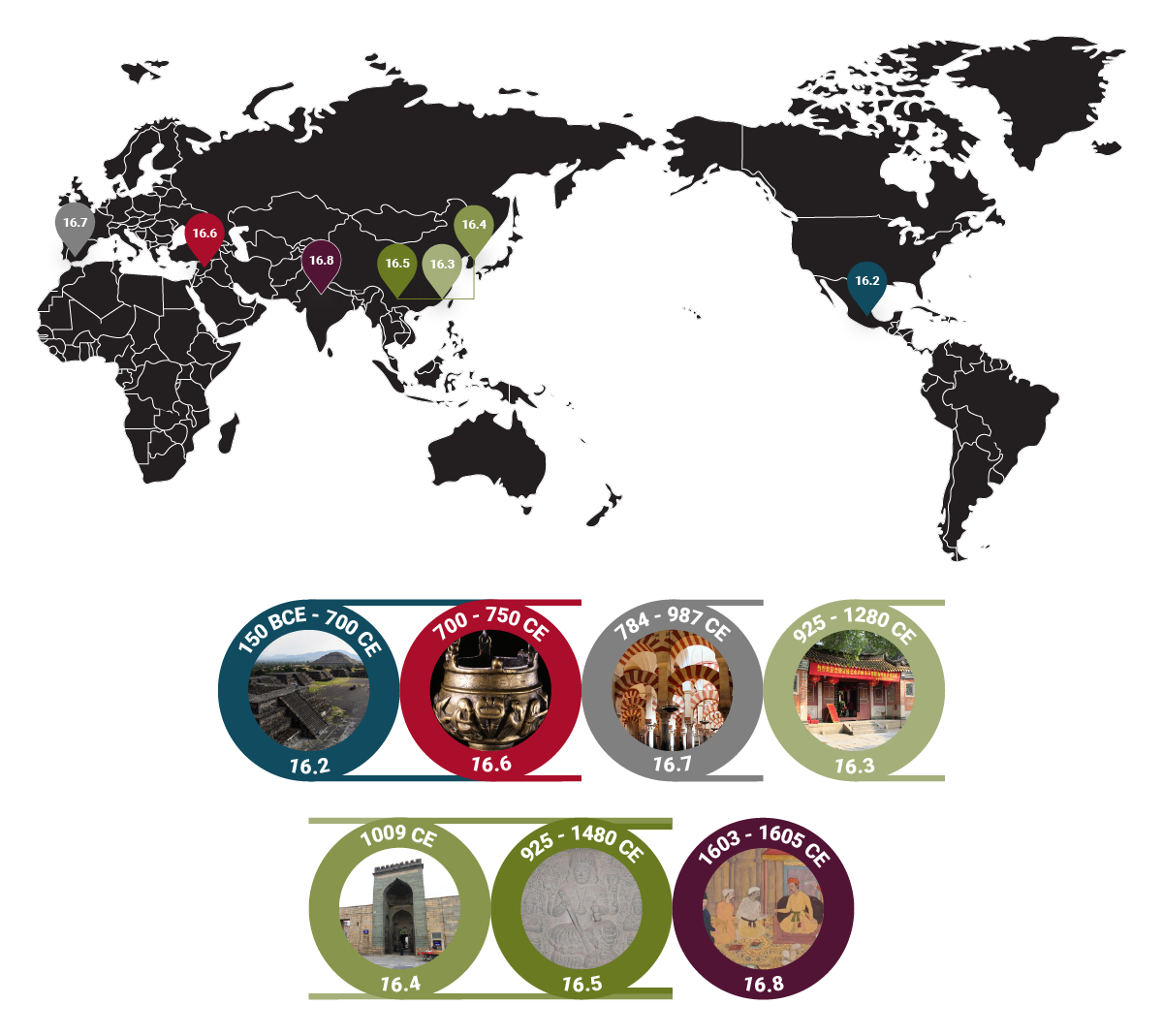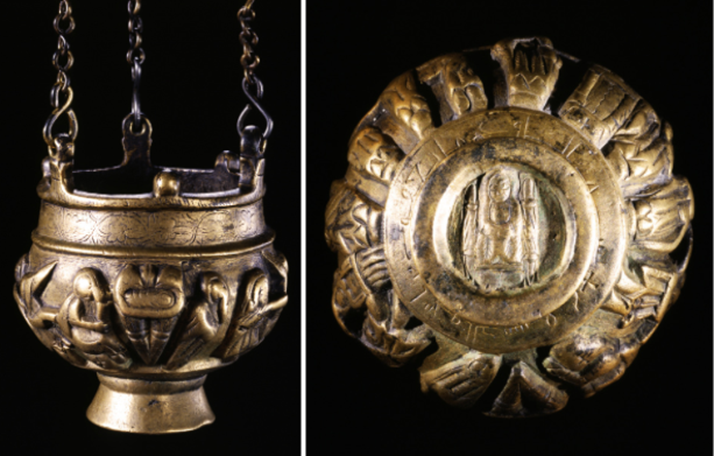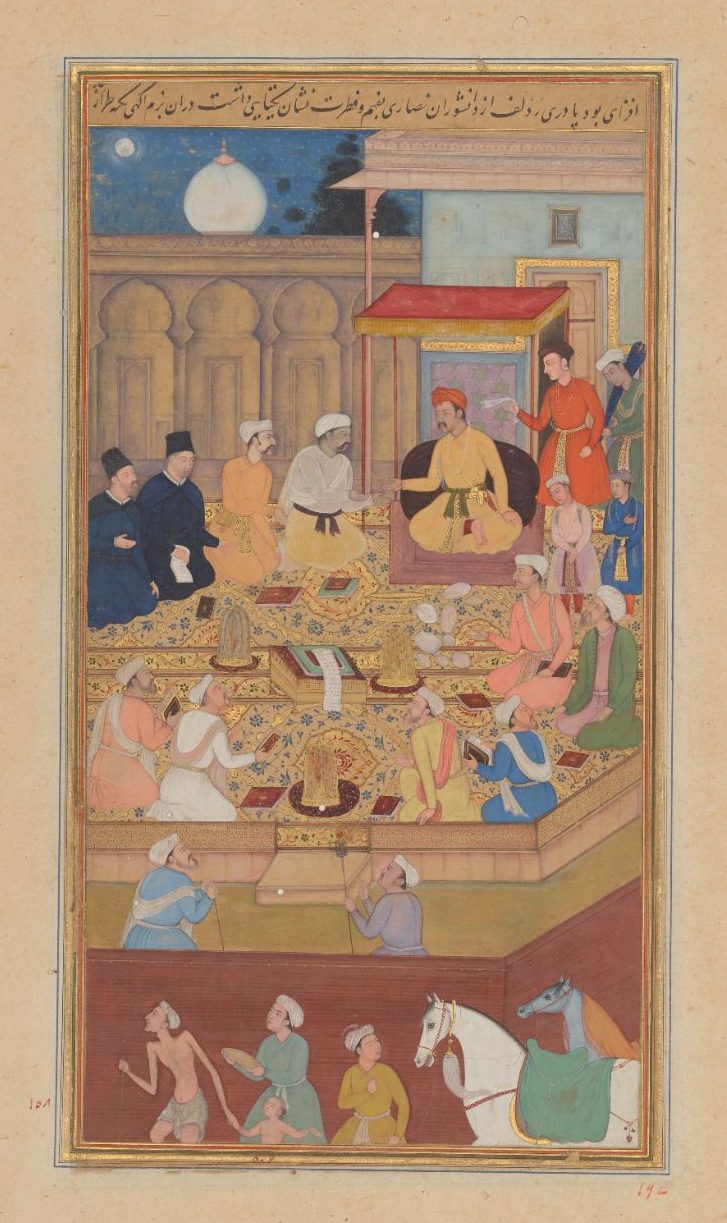16 Can We Live Together?

Can we live together?
We’ll end with this question. It can be a really tough one. Can we accept differences, ‘agree to disagree,’ and be neighbors with people who don’t look or believe like us? Our minds usually thrive when we are in the company of people we know and who make us comfortable. If we don’t feel comfortable, stress can develop. Oftentimes, comfort derives from familiarity, similarity, and shared experiences. This is a long-established thing about our human brains and perceptions. But the world and human societies have changed drastically since our brains first evolved.
We live closer and in more diverse communities than ever. So, what happens now? Do we segregate ourselves into racial communities? That’s what ‘Jim Crow’ Laws did from the 1880s to the 1960s CE in the US and what the American Civil Rights Movement sought to undo. The legacies of segregation are still present in many communities today. Biases of class, faith, or race/ethnicity make living together difficult in all countries around the world. There are some isolationist communities that prefer to be insular and reduce their engagements with the outside world, such as the Amish in the US or the Mennonites who live throughout North and Central America. In certain periods such as the early Edo period, Japanese society practiced quite strict isolationism with few exceptions.
But that doesn’t mean that it is impossible to live in multicultural, interfaith, and collaborative communities. In fact, there is a concept for just that: pluralism. The Pluralism Project (2021) of Harvard University defines it as “an ethic for living together in a diverse society; not mere tolerance or relativism, but the real encounter of commitments.” The.Ismaili (2020) defines pluralism as “an ethic of respect which values the beauty and strength of diversity,” importantly recognizing that it is “a work in progress.”
If communities are willing to be pluralistic, then the question transitions from ‘Can we live together?’ to ‘How do we live together for the benefit of everyone?’ By no means is this an easy thing. But, it is important to recognize that it isn’t a novel thing. It’s been done before! The examples of pluralism in past societies discussed below don’t mean that there was absolute harmony and idyllic living 24/7 but these examples do show that pluralism can work.
Pluralism at Teotihuacan
To start, let’s head back to Teotihuacan in the Valley of Mexico (Figs. 16.1 and 16.2). Remember the many residential barrios of Teotihuacan introduced in “What is Important to Us?” Review this map. Those neighborhoods were organized around the ceremonial core of the city, according to the social status of the occupants. Royals and nobility lived closest to the ceremonial buildings and commoners lived farther away.

Figure 16.2 (right): View from “Pyramids of the Sun” looking toward residential areas of the city, at Teotihuacan, Mexico, in 2013. Photo by MongeNajera; CC BY-SA 3.0.
Archaeological evidence suggests that the residents of at least one high-status residence, the Tetitla complex, were not local people but immigrants probably from the Maya region to the east. They may have emigrated to Teotihuacan as ambassadors on behalf of the king of a Maya polity, such as Tikal (which was known to have a relationship with Teotihuacan in the Early Classic period; check out “‘The Arrival of Strangers’: Teotihuacan and Tollan in Classic Maya History” [Stuart 1998]). These immigrants in Teotihuacan lived there for many years. They established a lavish household, with objects reflective of their Maya heritage, that would have identified their origins to visitors. Family members were buried with objects that demonstrated their origins, such as Maya pottery.
Farther out in the city, the so-called ‘Merchant’s Barrio’ was home to people focused on trade, particularly with the Gulf Coast region (where the descendants of the Olmec lived). These merchants may have been Gulf Coast immigrants themselves, establishing a commercial base in Teotihuacan while maintaining ties with their home culture through trade. These Gulf Coast merchants also adorned their homes and graves with objects deriving from their presumed homeland. In addition, archaeologists have determined that people associated with the region of Oaxaca, on the eastern Pacific coast of present-day Mexico, established a barrio on the west side of Teotihuacan. These people may have been from the Zapotec culture, discussed in “What Happens When We Die?” There were several other ‘enclaves’ of immigrants who over time became familiar participants in Teotihuacan social life. Many archaeologists refer to Teotihuacan as a multicultural ancient city because of this evidence of difference and coexistence. Check out “Corporate Life in Apartment and Barrio Compounds at Teotihuacan, Central Mexico” (Manzanilla 2009) for details on the archaeological data that supports these conclusions.
It is important to recognize that many school textbooks and public media tend to conflate the cultures of ancient Mesoamerica as all one culture. We discussed this in “What is Divine?” regarding the ‘Mother Culture’ moniker given to the Olmec. This concept presumes that all Mesoamerican cultures derive from the Olmec and/or owe their cultural successes to Olmec forerunners. That’s not the case. There was incredible cultural diversity in ancient Mesoamerica. For example, the Formative/Preclassic period included the unique developments of the Mokaya choco-holics (from “What Will I Get Out of It?”), the Maya, the Olmec, the Zapotec, and numerous other cultures. Most of these peoples were in contact with each other but lived according to their own autonomy. Over time, those contacts grew and innovations of hybridization grew, too. Eventually, we see the pluralistic urban society of Teotihuacan emerge in Mesoamerica. There were others, too. But much of the original diversity of the later periods was discounted, conflated, or misunderstood by the Spanish and other colonial forces. Unfortunately, a lot of knowledge about pluralistic societies in Mesoamerica at the time of Spanish contact has been lost. They definitely existed, not in absolutely harmony of course, but in ways that demonstrate social success and multicultural cohesion.
Interfaith pluralism in Quanzhou
Another very diverse historic community developed in the city of Quanzhou (pronounced choo-wen-jo) in present-day Fujian province of southern China (Fig. 16.1). Quanzhou is located across the Taiwan Strait from the island of Taiwan. It served as the largest and most successful port city during the Yuan Dynasty of China and continued well into the modern period. Famous travelers such as Marco Polo and Ibn Baṭṭūṭah visited Quanzhou. Arab travellers and traders that settled in this port city nicknamed it Zayton, after the beautiful flowers planted on the coastline to impress visitors. The city became home to many of these seafarers, eventually developing into a multicultural urban setting. Places of worship surviving from just before and during the city’s heyday attest to interfaith pluralism within this historic city.
As you might expect, Quanzhou preserves a Daoist temple, Fashi Zhenwu Temple (Fig. 16.3) built during the Tang or Song Dynasty, that reflects one of the primary indigenous spiritual traditions of China. The temple is a relatively modest example of traditional Chinese architecture (TCA). Do you notice the tile roof, upturned eaves and roof ridges (appearing like wings of phoenix about to take flight), the brick walls, and stone platform upon which all of that rest? Fashi Zhenwu Temple is certainly not as large or grand as the buildings of the Forbidden City, discussed in “Why Does Size Matter?”, but the native character of Chinese tradition is certainly present.

Not too far away, the Masjid al-Aṣḥāb (Fig. 16.4) is also preserved in Quanzhou, and happens to be the oldest Arab-style masjid in China. As early as the 700 CE (only a century after the death of the Prophet Muhammad), masjids were built in TCA style in Guangzhou (to the south of Quanzhou), such as the Huaisheng Masjid. Eventually masjids like Masjid al-Aṣḥāb were built with pointed arches, crenellations, and domed features. The builders of Masjid al-Aṣḥāb chose an architectural style reflecting Islamic India and Pakistan, locations from which many of the migrants to Quanzhou originated. The fact that this masjid still stands and represents the origins of Islamic immigrants attests to the pluralistic history of Quanzhou. To learn more about all kinds of masjids in China, check out “China’s Earliest Mosques” (Steinhardt 2008).
Speaking of India, archaeologist Wu Wenliang excavated the site of a Hindu temple in Quanzhou during the 1930s CE. He uncovered a carving of Shiva (Fig. 16.5), suggesting that the historic temple was dedicated to Shaivism. The style of the stone carving indicates that the temple was built by people who originated from Tamil Nadu, India (and/or people who preferred Tamil style carving). The temple doesn’t exist anymore, nor do the 10-12 other Hindu temples built around Quanzhou during the Song and Yuan Dynasties. Many of the fragments found by Wu are preserved in the Quanzhou Museum of Maritime History. As the Shiva temple, the masjid, and the Daoist temple demonstrate, the history of Quanzhou is pluralistic, allowing for diverse faiths to develop and maintain spaces of worship simultaneously.
Pluralism within historic Judeo-Christian-Muslim communities
Some of the most prominent cross-cultural differences today, often highlighted in the media, derive from faith differences. For example, tensions between Judeo-Christian majority countries of Europe and Euro-America and Muslim majority countries of Western Asia often make the headlines. Mostly, the tension is political and does not actually reflect the feelings of most Muslim, Jewish, and Christian people. Tensions have been hyped over and over again throughout history, culminating in poor understanding on all sides. History textbooks showcase wars and political conflicts. But what about the frequent, everyday experiences of pluralism that existed in the past? Let’s look at some examples relevant to contemporary tensions within the Judeo-Christian-Muslim community.
After the death of Prophet Muhammad, there were disagreements about who should lead the Muslim community. These disagreements contribute to the divide between Sunni and Shi’a Muslims today. Over about 30 years, four caliphs (successors/leaders) took power, all dear friends, confidants, and family members of Prophet Muhammad (Abu Bakr, Umar, Uthman, and Ali in that order; collectively known as the Rashidun caliphate). In 661 CE, a clan known as the Umayyads took power (defeating Ali) and established the Umayyad Caliphate.
Umayyad leaders moved their political capital from the Arabian Peninsula north into the Levant (while the spiritual capital remained at Mecca). The Umayyads first moved into Jerusalem (present-day Palestine and Israel) and then into Damascus (present-day Syria). This meant that they interfaced with, and came to rule over, Jewish and Christian populations. Popular knowledge in Western media might lead you to think that this period in Jerusalem, for example, was a bloodbath… Nope. That false image is influenced by the quite exaggerated European descriptions of the Crusades (which occurred much later between 1095-1291 CE). In fact, Umayyad rule in the Levant was marked by interfaith and intercultural tolerance for the most part, specifically expressed as an important tenet of Islam by Prophet Muhammad. It is important to note that there was considerable internal tension and conflict between the Sunni and Shi’a communities, but external conflicts were minimal during this time.
For example, the first Umayyad caliph, Muawiyah, was given the nickname al-Mustanir as-Samah (enlightened and tolerant). One of his wives was Christian and many officials in his government came from Christian backgrounds, such as the father of St. John of Damascus of the Orthodox Church. After establishing his authority through conquest and/or diplomacy, Muawiyah appointed non-Muslim governors to regions that corresponded to their backgrounds (meaning local Christian leaders governed Christian villages). These governors assessed taxes as local representatives of Muawiyah’s government and received funding for public works, such as the construction of churches. This period also offered more religious freedom to Jews than had been afforded to them under previous Byzantine Christian rule of the region. The same religious freedom was often not allotted to non-Abrahamic populations (including polytheistic groups), however.
During the later part of the Umayyad reign in present-day Syria, an artist named Yaqub produced Incense Burner (Fig. 16.6) for Orthodox Christian patrons. The primary motifs around the bowl feature scenes of the Annunciation (the angel Gabriel’s message to the Virgin Mary that she would conceive a child who would become a savior), the birth of Jesus Christ and his baptism, the Crucifixion (nailing of Jesus Christ to a cross by Romans in Jerusalem), and the tomb of Jesus (the site of the resurrection story of Jesus Christ). Each of these events are deeply tied to the Christian tradition. Importantly, they all relate to the Islamic tradition, which recognizes Jesus Christ as an important figure, but do not hold as much weight as the events during Prophet Muhammad’s lifetime, for example.

Most importantly for our purposes here, the base of Incense Burner (Fig. 16.6 right) also features a carving of the Madonna and Child surrounded by an Arabic inscription in early Kufic script. The David Collection (1994), which owns this object, translates the inscription as: “In the name of Allah, made by Yaqub, son of Ishaq from Damascus.” It is possible that Yaqub identified with the Muslim tradition but produced this object with specific Christian imagery for use in a Christian setting. It would have been used by a priest to spread the smell of incense within a church. The Arabic inscription is clearly visible on the underside of the vessel. We cannot definitively say that Yaqub was Muslim, since Arabic was the dominant language of Damascus at that time and non-Muslims were known to invoke it. However, it seems likely that a Muslim artist’s name and Muslim sentiments about Allah would have been present in a Christian church around 700 CE, without any concern.
When the Umayyads moved to Spain, after being defeated by the Abbasid Dynasty in 750 CE, they established a kingdom in southern Spain called Al-Andalus, centered on the city of Cordoba. This move involved conflict and political negotiation with the Catholic establishment in Spain. Despite this political tension, the Umayyads of Spain worshiped alongside Christians in churches for many years. The Mezquita (aka The Great Mosque of Cordoba; Fig. 16.7) was used by Christians and Muslims simultaneously until an Umayyad leader purchased the church in a peaceful agreement and remodeled it to specifically suit traditional masjid design. In these periods, Muslim caliphs and Christian kings of Spain mostly supported convivencia (co-existence), whereby the religious faith of regular people was not persecuted, as long as taxes were paid. The violent conflicts were between political leaders, not everyday citizens (except for those men and women drafted into the service of a leader’s military).
These political conflicts between Muslim and Catholic leaders in Spain included the Reconquista (re-conquering) undertaken by several Catholic kingdoms over time. This started as early as the 770s CE. But the Reconquista really gained steam in 1085 CE when the Umayyads suffered a significant defeat at Toledo. Soon thereafter, inspired by the long-running Reconquista and spurred by the Pope, European kings started the Crusades as a ‘holy war’ against Muslims, with the goal of re-taking the Levant and cities like Jerusalem.
The Crusader Kingdoms of Christian mercenaries took and lost power over many battles in the Levant but overall, Muslims retained power. Famous Muslim leaders such as Salah al-Din (aka Saladin) developed strong diplomatic relations with Crusaders and granted amnesty to all common (non-elite and non-military) Christians. The stories of the Crusades that made their way back to Europe fixated on slaughter, barbarous ‘Saracens’ (medieval English term for Muslim person), and Christian persecution, that was actually relatively minimal. In fact, most of the tiraz, discussed in “What Happens When We Die?”, that survive today were imported into Europe during the Crusades, as tokens of the Holy Land. The Arabic calligraphy and design of a band of embroidery became highly influential in early Modern and Renaissance depictions of Christian religious figures, such as in Adoration of the Magi by Gentile de Fabriano (1423 CE). To consider multiple perspectives on the Crusades, check out “The Islamic View and the Christian View of the Crusades” (Chevedden 2008).
While the Crusades continued in the Levant, another Muslim force, called the Almoravids from North Africa, invaded Al-Andalus in 1086 CE and established a distinct Muslim kingdom. In 1212 CE, other European powers aided the Spanish kingdoms in their Reconquista against this new Muslim power. Eventually, in 1492 CE, the Reconquista succeeded in its mission as the Kingdom of Aragon (King Ferdinand and Queen Isabella) pushed out the remaining Muslim leaders. This came on the heels of the Spanish Inquisition started in 1478 CE, which somewhat reversed the previous convivencia approach. The Spanish Inquisition did not just target Muslims, but Jews as well, forcibly converting or expelling non-Christians based on a religiously-motivated judicial process. Many Jews emigrated to the Levant, which by the 1290s CE was back under full Muslim leadership. (FYI: The Spanish Inquisition got its own bad reputation during the Protestant Reformation; check out resources recommended below).
Eventually, the Ottoman Empire provided refuge to Jews who were being persecuted and expelled all over Europe from 1300-1650 CE. During that period, the Ottomans are considered by many scholars to have fostered a government of religious pluralism through their millet system, which is an institutionalization of the convivencia approach. Millet refers to the interrelated Jewish, Christian, and Muslim communities focused on the traditions of Abraham/Ibrahim, with each millet representing a specific faith group such as Armenian Orthodox Christians, Jews, or Roman Catholics. These groups were allowed to practice their traditions without persecution, as long as they paid their taxes. It is true that the millet system required non-Muslims to pay higher taxes than Muslim citizens.
Remember Hagia Sophia from “What is Divine?” (Figs. 4.14 – 4.16)? That structure was originally built by Byzantine Orthodox Christians. It was then converted into a masjid by the Ottomans after they conquered Constantinople/Istanbul. They could have torn the structure down, demolishing the Christian legacy. But like most Muslim leaders before them, they followed the guidance of Prophet Muhammad, accepting those of Abrahamic beliefs. Overall, the Ottoman Empire is known for religious tolerance and even pluralism. For more on this topic, check out “Islam and Toleration: Studying the Ottoman Imperial Model” (Barkey 2005). We must also acknowledge that things changed in the Ottoman Empire around the period of World War I, when ethnic persecution of Armenians led to what many scholars refer to as an ethnic genocide.
Another empire that is particularly tied to religious pluralism during most (but not all) of its history is the Mughal Empire of India. Remember Humayan (“What Happens When We Die?”), the father of Akbar (“Why Do They Have More Than Us?”), the father of Jahangir (“Why Do I Have To Do What You Say?”)? We’ve already seen Jahangir Preferring a Sufi Sheikh to Kings (Fig. 14.3), demonstrating religious over political devotion. You may think that Akbar was more focused on political matters than his son if you only see images like The Young Emperor Akbar Arrests the Insolent Shah Abu’l-Ma’ali (Fig. 13.8). On the contrary, Akbar was very interested in religion and spiritualism. His court was open to diverse religious traditions and one of his favorite wives was Hindu. Importantly, Akbar was probably dyslexic and so did not rely on reading to learn and explore ideas. He welcomed interfaith discussion about spiritual matters and invited visitors to his court to learn through dialogue.
Akbar Presiding over Religious Discussion (Fig. 16.8) illustrates a scene in the Ibadat Khana (House of Worship) at Akbar’s capital, Fatephur Sikri near present-day Agra (Fig. 16.1). This space was dedicated to theological discussion every Thursday evening in which Sunnī and Shī’a Muslims (including those of the Sufi mystical tradition), Hindus, Christians, Buddhists, Jains, Zoroastrians, and atheists participated. This illustration depicts a scene from the Akbarnama and has been preserved with its corresponding page of text by the Chester Beatty Collection. The text was written by court historian Abu’l-Fazl, the calligraphy was created by Muhammad Husayn Kashmiri, and the image in Figure 16.8 was illustrated by court painter Narsingh.

A group of Muslim officials of the Mughal court surround Akbar (seated in a small elevated pavilion in a yellow robe). Two figures on the far left, dressed in dark blue robes with conical hats, are identified as Rodolfo Acquaviva and Francisco Henriquez. They were Catholic Jesuit priests who visited Fatephur Sikri in 1578 CE. The discussion participants, including the Jesuits, hold books and manuscripts, several of them open as if the holder just quoted passages during the debate. The discussion seems lively, with several figures gesturing, leaning forward, and actively conversing with neighbors.
Interestingly, Narsingh illustrates four people and two horses walking outside the red sandstone city walls at the bottom of the composition. These people are not part of the discussion but appear to represent the populace around the city. There is a low-status and apparently almost starving man (potentially an ascetic) guiding a child. Then, a man in a teal robe holds an object, potentially a food item. Then a man in a yellow robe with a feather adorning his turban controls the two horses’ reins. The adult figures appear to differ according to their resources and status. Perhaps this is a line of citizens hoping to speak with Emperor Akbar about their varying concerns. Or perhaps these are representatives of the social spectrum of people in Akbar’s diverse realm who will be affected by religious decisions or decrees that result from discussions in the Ibadat Khana.
The Wrap-up
Religious pluralism or pluralism of any kind is not just a political move. These practices have strong impacts in regular peoples’ lives every day. The people of Teotihuacan, Quanzhou, Jerusalem, Cordoba, and Agra lived in multidimensional communities, not without conflict but mostly with the security that they could practice their values and traditions according to their own wishes without the threat of violence. The economics of tax policies made some people rich and some people quite poor in many of these cities. Those are not insignificant facts of history to ignore. But it is also important to remember that co-existence and pluralism have been practiced before, encouraged social growth over time, and led to some of the most interesting and inspiring aspects of our human past. Consider these lessons and how they relate to your life as you explore the media and scholarly resources below.
News Flash
- The Youtuber “Blondie in China” offers a view of Quanzhou that expands upon our discussions of religious pluralism there in “Quanzhou: Where world cultures meet” (2019).
- Check out 4K aerial footage of Cordoba, including the Mezquita!
- Have you seen the version of the Spanish Inquisition from “The Monty Python” crew? Those portrayals are quite extreme. Check out the BBC documentary “The Myth of the Spanish Inquisition” (1994) for a more realistic picture.
- Did you check out the 2008 Bollywood historical drama Jodhaa Abkar already? If you haven’t yet and are interested in Akbar’s religious pluralism, you must! It features the story of Akbar and his favored Hindu wife, Jodhaa.
Where Do I Go from Here? / The Bibliography





